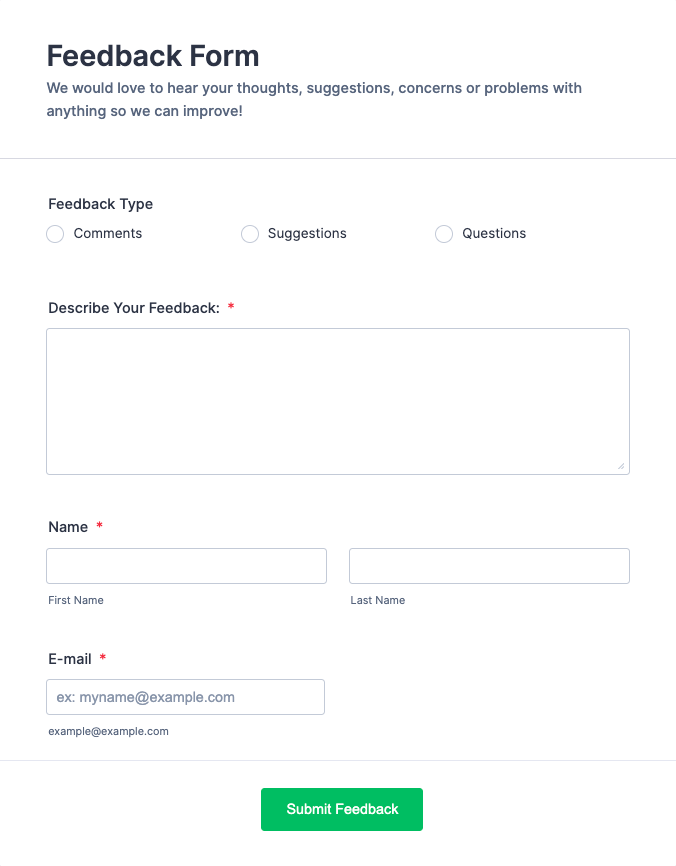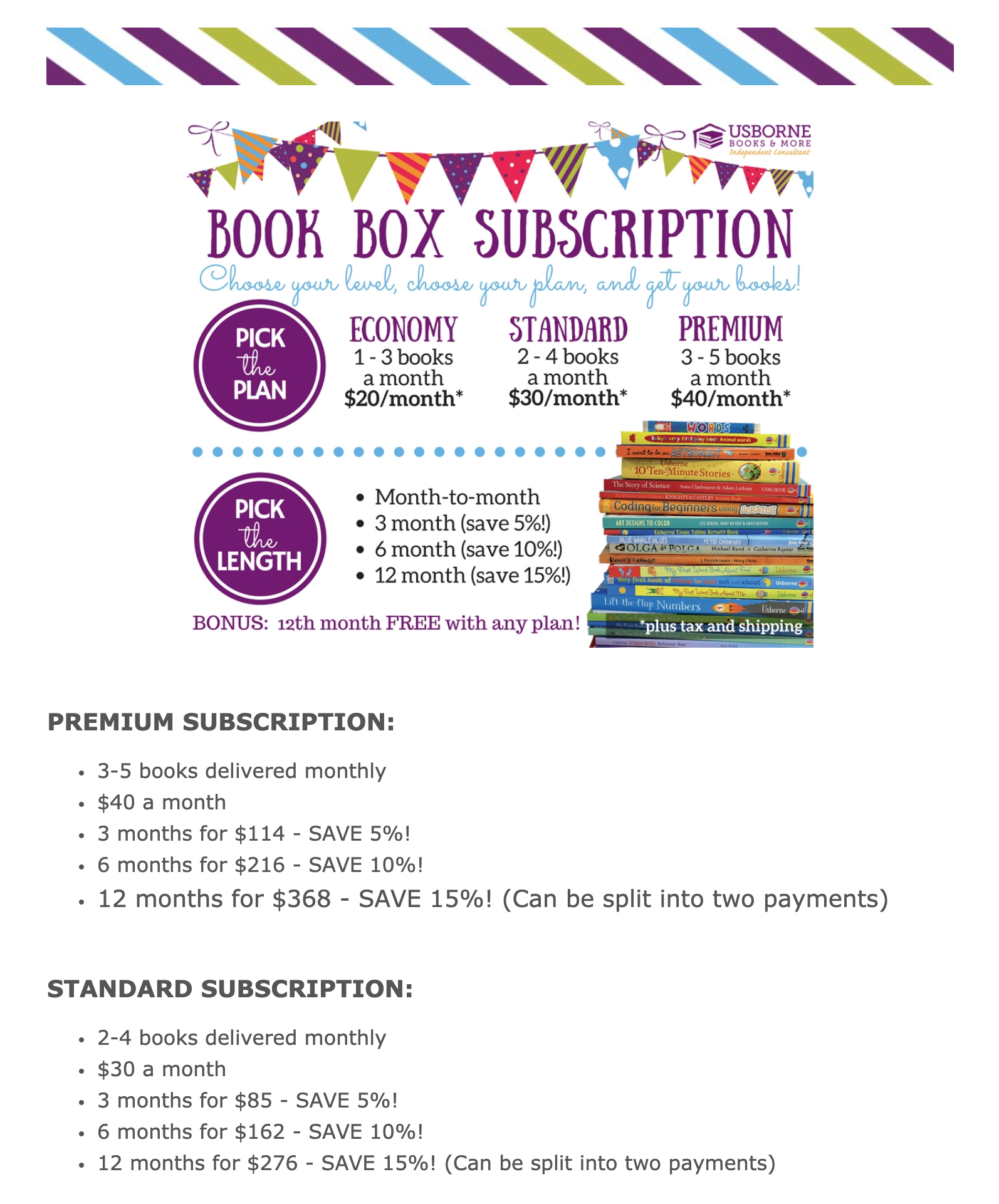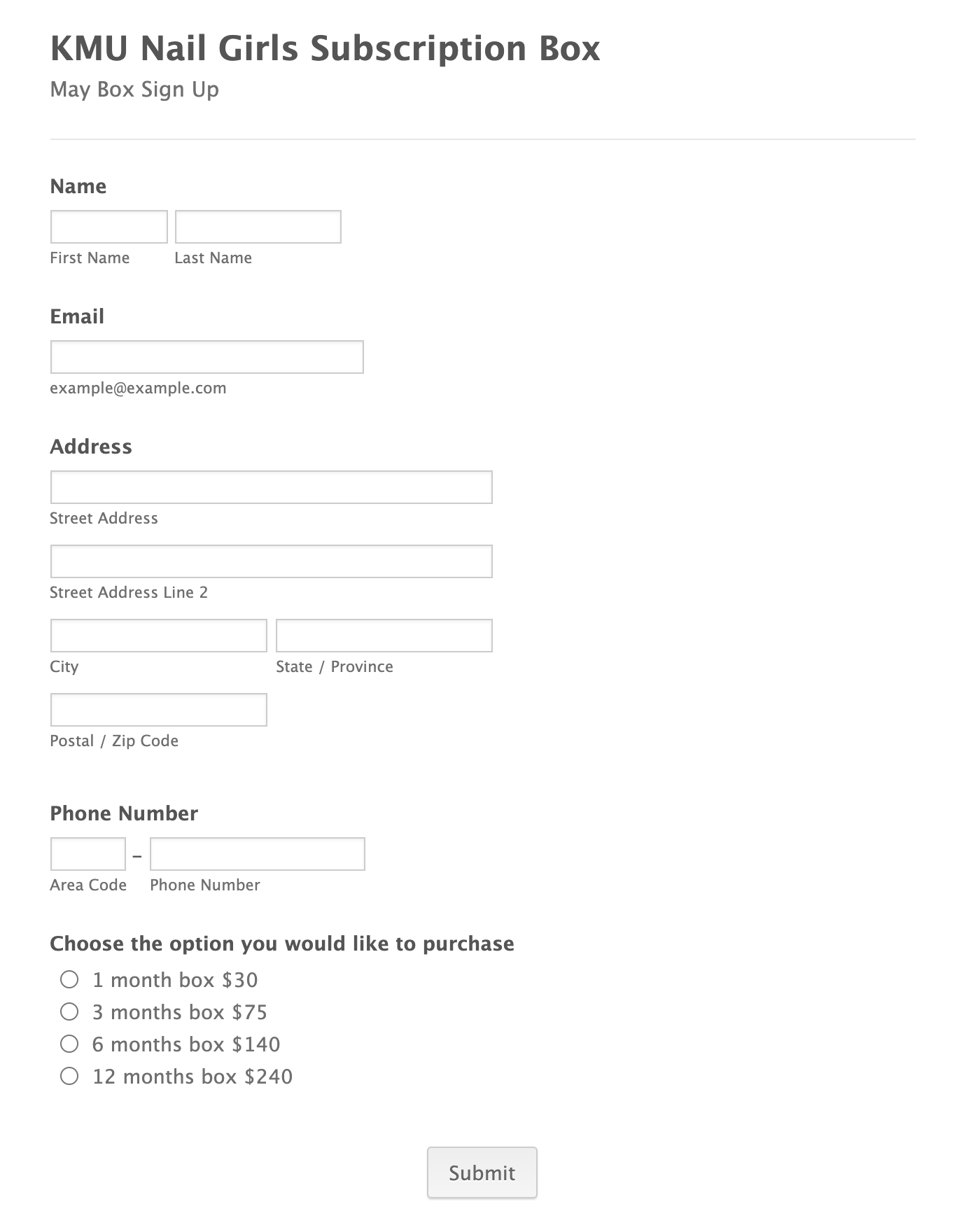Tips to start a subscription box company
- Create the box concept
- Produce a sample box
- Arrange packaging and shipping options
- Build subscription forms
- Develop a promotional plan
- Begin accepting subscriptions
Repeat customers, assured income, and money in the bank each month — sounds like every business owner’s dream, right? But a subscription box company is better than a dream for business owners — and for their customers.
With subscription box services, customers don’t need to remember to place an order or submit payment. For a reasonable periodic fee, they receive great products delivered straight to their door every month or week. Is it any wonder that more and more people are signing up for subscription box services — and even big brands like Coca Cola and Nike are jumping in?
With the right strategy and tools, any brand with a good range of products can run a successful subscription box business. Here’s how to get started.
1. Create the box concept
A subscription box is much more than a few products thrown into a package. It’s designed with the customer in mind. Take a look at your product offerings and find the right combination that gives your customers added value and a reason to subscribe.
It’s also important to note that subscription box businesses come in two broad models: set orders and discovery orders. For set orders, convenience is the name of the game. The customer chooses what they want to include in their periodic delivery — for example, a set number of disposable contact lenses and bottles of lens solution every month. They can adjust the order at any time, but they always get to choose.
Discovery orders include a range of items in certain categories. The business selects these items based on the customer’s preferences and shopping behaviors. It’s a great way for customers to sample new products and expand their brand experience.
The subscription box concept you choose will depend on the needs and preferences of your target customers, the type of products you sell, your brand identity, and more.
2. Produce a sample box
The next step is creating a prototype of the subscription box. This will help you fine-tune the concept into a workable, attractive offering that will generate demand.
Test your sample box on current customers, focus groups, employees, or even family and friends. Consider sending a complimentary box to a selected group of customers and including a feedback form to gather opinions and suggestions for improvements. You can then experiment with different product combinations and design ideas until you arrive at the best possible result.
At this stage, you should also work on pricing for the subscription service. This will depend on the products you include in the box and how often you’ll send boxes to customers. Make sure to offer a combination of products and frequencies that maximizes your potential revenue while still offering an affordable and attractive subscription price.
3. Arrange packaging and shipping options
Once the box configuration is ready, prepare the groundwork for the logistics side of the business. Think box size and packing materials. Consider having your logo printed on the box to strengthen your brand presence — or using recyclable materials if sustainability is one of your core business values.
You also need to decide what kind of shipping options to offer customers and which delivery company can reliably provide them. The location and distribution of your target audiences will influence this decision. Are they mostly in your local area or spread out over different states? Subscription services demand ongoing partnerships with suppliers and shippers, so go with proven recommendations or those who you’ve worked with before and trust.
4. Build subscription forms
Even if you offer the most amazing subscription boxes, customers won’t get on board if the signup process isn’t simple or user-friendly enough. This is particularly important for subscriptions that are complicated.
For example, a book box subscription needs to take the ages and preferences of the readers into consideration. This requires a more advanced subscription form that includes multiple questions and fields, including free text fields.
On the other hand, a simpler form template may be all you need for a more straightforward subscription service. Either way, using an online form builder is an ideal solution, as it provides customizable templates that you can adapt for your subscription box business in minutes. Also, digital forms can integrate with online payment gateways, making it easy for customers to sign up and pay in one form.
5. Develop a promotional plan
Now your subscription box company is ready to launch, and it’s time to spread the word. You can build a landing page or add a new page to your current website and promote it on social media, search engines, display networks, and native ad networks.
Create buzz around your new subscription box service with a giveaway contest, social media sharing incentives, or influencer marketing partnerships, like subscription box bloggers and reviewers. Focus on the benefits of your subscription box service for customers — convenience, affordability, product quality, or whatever makes your subscription boxes stand out.
6. Begin accepting subscriptions
When subscriptions start rolling in, you must put your service into action. Inevitably, there will be hiccups. You can use these as an opportunity to refine the processes and make them smoother. For example, if you’re offering a discovery-style service, then you’ll learn along the way which products are most popular and profitable. You may have to adjust your subscription forms and include more questions to help you better understand your customers’ preferences.
No customer is forever
Businesses love the subscription box model because it’s based on automatic repeat purchases. But never take any customer for granted. When your subscription box business is in full swing and driving decent revenue, start to develop a customer retention plan.
Focus on ways to satisfy your subscribers and help them see the benefits of continuing or even upgrading their subscription. This could be in the form of incentives, referral programs, or reconfiguring your product combinations every now and again.
The key to a successful subscription box business isn’t just convenience and pricing — it’s also about keeping things fresh and exciting.
























Send Comment: